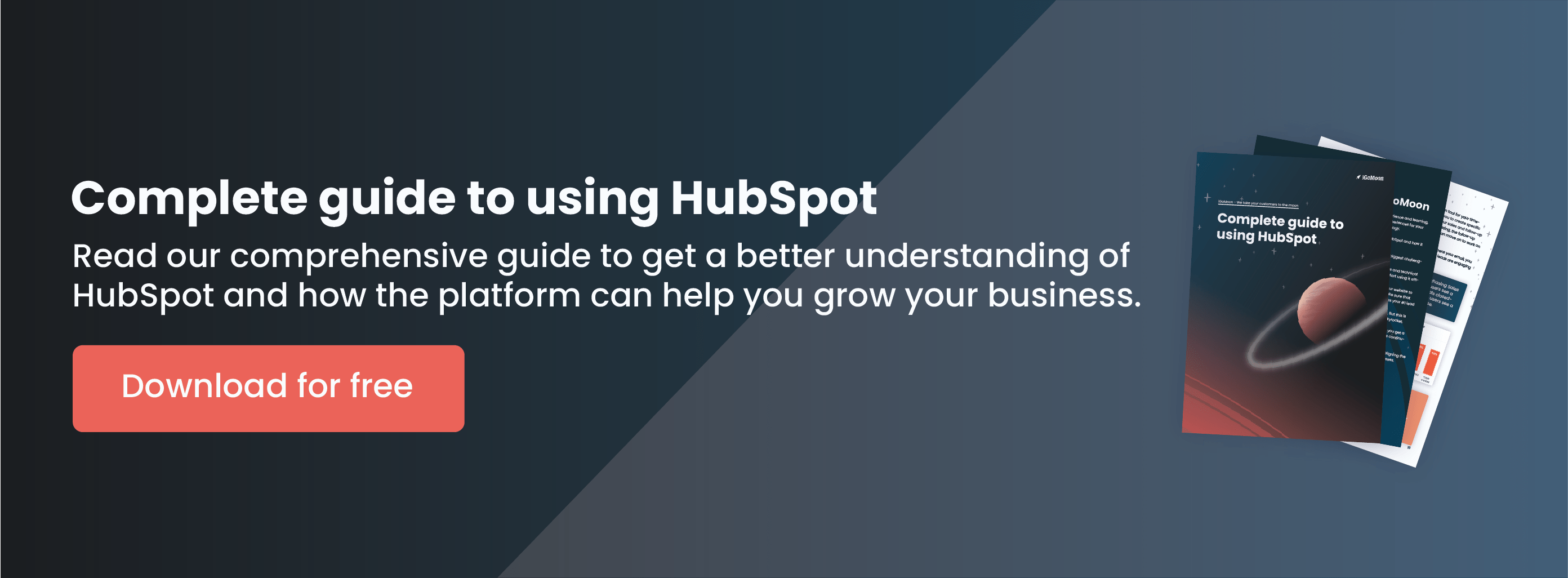The internet is a competitive place. Anything that can give you an edge over your competitors is worth investing in. In this article, we'll explore microsites and whether your company's web presence could benefit from building one...or two.

*This post was originally written by Tayla Fagan and published on 15 September 2021
Firstly, what is a microsite?
A microsite is pretty much what it sounds like: A single web page that exists separate from your main business website. The idea behind a microsite is to offer another platform for your potential customers to discover your brand and take a specific action (like signing up for your email newsletters for example).
While you might use your logo, brand colors, fonts, etc. when creating your microsite, you have the flexibility to have fun with your brand components and make your microsite stand out from your normal website.
*We want to highlight that you should not confuse a microsite with a landing page. Landing pages are single pages used for lead generation.
Watch the webinar with the authority on creating microsites using HubSpot CMS Hub, Alex Girard.
The difference between a microsite and a website
Microsites have a unique domain name
One of the major differences between a microsite and your business website is that a microsite lives on its own independent domain. (This URL doesn’t need to contain your brand name).
Microsites hold different content than your business website
A microsite is its own entity. It can contain media elements such as audio, images, or videos that aren’t on your main website. You can also build creative engagement functions into your microsite. Since microsites don’t exist on the company’s homepage, they’re a great launchpad for new ideas and creativity.
Size doesn’t matter
Compared to a regular business website, a microsite only has a few pages. The big idea of using a microsite is to minimize clutter and distraction, so content is much more focused.
Microsites don't have to be forever
In most cases, microsites are temporary sites. Brands will use them as part of a specific marketing campaign or strategy and once the campaign comes to an end, so does the microsite.
Now that you have a clearer idea of what a microsite is and how it differs from your main business website, let’s move on to exactly what purpose microsites can serve.
 (Image: Pexels)
(Image: Pexels)
When to use a microsite
There is no precise answer to the question "should we use a microsite?". However, these are some questions you can ask to help you decide if a microsite is right for you:
- How long do you need the site to be live?
If the campaign you're going to run will be short-lived you do not want to worry about the ongoing costs of website maintenance. In this scenario, a microsite would be a brilliant solution. - How will your users hear about the microsite?
Think about the user journey. Do your users need to visit your main business website, or can they get here by clicking on a banner ad? If visiting your main website will confuse your user, a microsite might help you to not lose them. - Could you do it within your corporate site?
Find out how flexible your main corporate website is. Maybe the design and layout could be customized enough to support the needs of the campaign.
Key benefits of using a microsite
You might wonder why brands, especially those with brand recognition, decide to set up a "mini-site" that exists outside of their main website. It’s almost counterintuitive to the fundamentals of inbound marketing.
Well, company websites can be rigid in their structure, design, and messaging. Don't get us wrong, that is not a bad thing! Microsites however, allow you to experiment, branch out beyond what you're known for, and maybe implement alternative content strategies to reach a new or particular audience.
Below, we explore the different ways businesses can leverage microsites and the key benefits.
Increase your brand visibility
Microsites offer another way for you to boost your brand awareness online. With content that is engaging, fun, informative, creative and innovative, microsites can help you gain or maintain top of mind awareness.
New lead generation through experiences
Gaining new leads is at the heart of every business’s marketing objectives. Done well, a microsite can pull a potential customer in, rather than push them towards an action that will turn them into a lead. Customers have never been more conscious or wary of targeted advertising online. The way successful brands are circumventing this is by creating experiences that come across as informative and engaging rather than the usual hard sell or push marketing tactics. The right microsite provides an effortless, seamless process from curiosity to genuine interest. Prospects move on to the next step in the sales funnel because a microsite has offered them an experience.
 (Image: Pexels)
(Image: Pexels)
Reduce the number of layers in your user's journey
Google coined “Micro-moments” (consumers reflexively going on devices – often smartphones – for information gathering purposes that can lead to purchase) is a huge part of customer behaviour. Having a microsite that can deliver the information sort out by a consumer is a fantastic way to be right there wherever they are in their purchase journey. You can create a microsite for every one of the steps in the purchase funnel.
Boost your customer engagement
In an age where celebrities reply to the tweets of their fans, consumers demand more from brands. Customers want and crave engagement. A microsite is an easier way to do this. If you offer this level of engagement to your audience, they will thank you for your efforts by sharing your content, which will grow your brand popularity through word-of-mouth marketing.
Microsites are great for CRM
While email newsletters are still a great way to keep your existing or previous customers informed and coming back for more business, they can be repetitive. With a microsite, your marketing communication can be more diverse, dynamic, engaging, and memorable.
Use HubSpot's CMS Hub to create your first microsite
In today’s world, your customers expect personalized interactions with your brand. They expect instant replies and they want a consistent experience throughout their journey. You need a CMS that was built with business growth in mind, one that can scale as your business grows, and without needing to switch platforms when you need to scale your tech stack.
You need a CMS like Hubspot's CMS Hub. With a responsive, integrated content management system, your business can use real-time customer data to drive decisions, and your team of marketers can deliver a better experience to your customers again and again.
Get started with HubSpot's CMS Hub today
As an Advanced CMS Implementation Certified Partner we work across all HubSpot's Starter, Professional and Enterprise CMS licences. If you're looking for a consultant to help guide your next website project, set up a call with us.
Meanwhile, download our free guide to learn more about how HubSpot can help you grow your business.
